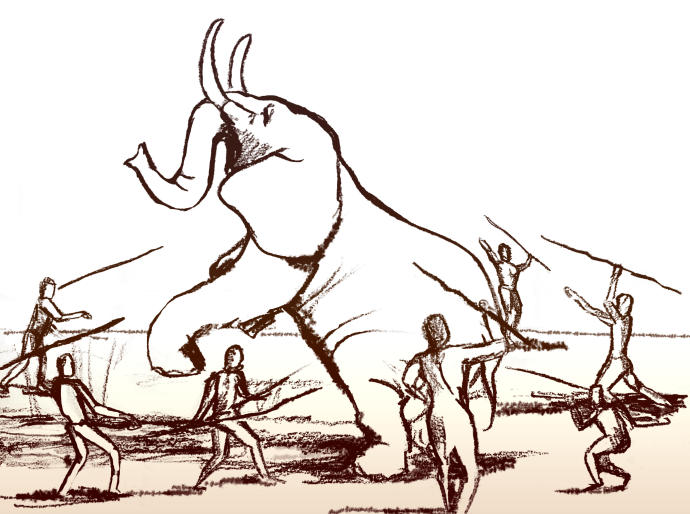Australian archaeologists have found that a newly found tool, dubbed the "stone Swiss Army knife of prehistory", was made the same way in great numbers across long distances and several distinctly different areas in southern Africa. This shows early humans were sharing information and communicating with one another.
The study published in Scientific Reports, found the artefacts produced in enormous numbers across southern Africa roughly 65 thousand years ago were made to a similar shape.
The team of international scientists, led by University of Sydney archaeologist, Dr Amy Way and Australian Museum, have revealed that early humans across southern Africa made a particular type of stone tool.
“People have walked out of Africa for hundreds of thousands of years, and we have evidence for early Homo sapiens in Greece and the Levant from around 200 thousand years ago. But these earlier exits were overprinted by the big exit around 60 thousand years ago, which involved the ancestors of all modern people who live outside of Africa today, ” Dr Way, from the Department of Archaeology at the University of Sydney and the Australian Museum explained.
A multi-purpose blade, resembling a Swiss army knife of sorts, that was used as a hunting tool, such as barbs in hand thrown spears and possibly bow and arrows, for cutting wood, plants, bone, skin, feathers and flesh. This means populations must have been in contact with each other, the researchers said.

“Why was this exodus so successful where the earlier excursions were not? The main theory is that social networks were stronger then. This analysis shows for the first time that these social connections were in place in southern Africa just before the big exodus,” Dr Way added.
The main theory is that social networks were stronger then. This analysis shows for the first time that these social connections were in place in southern Africa just before the big exodus
Dr. Amy Way
“While the making of the stone tool was not particularly difficult, the hafting of the stone to the handle through the use of glue and adhesives was, which highlights that they were sharing and communicating complex information with each other,” Dr de la Peña, who studies the cultural behaviour of the early Homo sapiens, at Cambridge University said.
Early humans relied on cooperation and social networking, and this research provides some of the earliest dated observation of this behavior, Chief Scientist at the Australian Museum, Professor Kristofer Helgen explained.
“Examining why early human populations were successful is critical to understanding our evolutionary path. This research provides new insights into our understanding of those social networks and how they contributed to the expansion of modern humans across Eurasia,” Professor Helgen said.
Examining why early human populations were successful is critical to understanding our evolutionary path
Prof. Kristofer Helgen
